
Marvels of Kuwait: The Water Towers
Explore the stunning Kuwait Water Towers, a perfect blend of functionality and architecture, offering serene surroundings and vibrant night illuminations.
The Kuwait Water Towers are an iconic symbol of modern Kuwait. These stunning structures are not just essential for water storage, but they are also an architectural delight. The towers, standing tall and proud, offer a glimpse into the country's progressive vision and engineering prowess. As you approach the towers, their unique mushroom shape and vibrant colors will captivate you, making for a perfect photo opportunity. The Water Towers are situated in various parts of Kuwait, with the most famous ones being the five towers located in the suburb of Adailiya, often referred to as the Mushroom Towers. The towers are beautifully illuminated at night, creating a magical ambiance that is hard to miss. The design of these towers is a blend of functionality and aesthetics, reflecting Kuwait's rich cultural heritage and its forward-thinking approach. Visitors can enjoy a serene stroll around the towers, taking in the sights and the well-maintained gardens that surround them. The area is peaceful and offers a great escape from the bustling city life. Whether you are a history buff, an architecture enthusiast, or someone looking for a tranquil spot to relax, the Kuwait Water Towers are a must-visit destination in Kuwait.
Local tips in Kuwait Water Towers
- Visit in the evening to see the towers beautifully illuminated.
- Bring a camera for some fantastic photo opportunities.
- Wear comfortable shoes for a pleasant stroll around the area.
- Check local weather forecasts as it can get very hot during the day.
- Look out for nearby cafes to enjoy a refreshing drink after your visit.
Marvels of Kuwait: The Water Towers
The Kuwait Water Towers are an iconic symbol of modern Kuwait. These stunning structures are not just essential for water storage, but they are also an architectural delight. The towers, standing tall and proud, offer a glimpse into the country's progressive vision and engineering prowess. As you approach the towers, their unique mushroom shape and vibrant colors will captivate you, making for a perfect photo opportunity. The Water Towers are situated in various parts of Kuwait, with the most famous ones being the five towers located in the suburb of Adailiya, often referred to as the Mushroom Towers. The towers are beautifully illuminated at night, creating a magical ambiance that is hard to miss. The design of these towers is a blend of functionality and aesthetics, reflecting Kuwait's rich cultural heritage and its forward-thinking approach. Visitors can enjoy a serene stroll around the towers, taking in the sights and the well-maintained gardens that surround them. The area is peaceful and offers a great escape from the bustling city life. Whether you are a history buff, an architecture enthusiast, or someone looking for a tranquil spot to relax, the Kuwait Water Towers are a must-visit destination in Kuwait.
When is the best time to go to Kuwait Water Towers?
Iconic landmarks you can’t miss
Al Shaheed Park
Discover the beauty and cultural richness of Al Shaheed Park, an urban oasis in Kuwait City, perfect for relaxation and exploration.

Boulevard Park
Experience the tranquil beauty of Boulevard Park, a lush urban oasis in Salmiya perfect for relaxation and family fun.

Sheikh Jaber Al-Ahmad Cultural Centre
Explore the Sheikh Jaber Al-Ahmad Cultural Centre in Kuwait City, a stunning venue for arts, culture, and architectural beauty.

Liberation Tower
Explore the Liberation Tower in Kuwait City, a stunning symbol of freedom and a gateway to breathtaking views and rich Kuwaiti heritage.

Grand Mosque of Kuwait
Explore the Grand Mosque of Kuwait, a breathtaking architectural marvel and cultural landmark, embodying Islamic art and spirituality in the heart of the city.
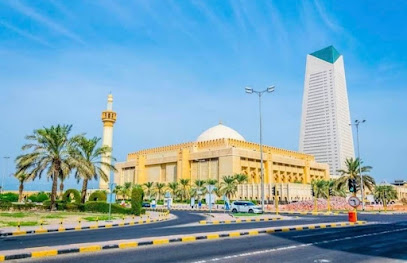
Green Island
Experience the beauty and tranquility of Green Island, a tropical paradise in Kuwait City, perfect for relaxation, adventure, and cultural exploration.

Safat Square
Explore the vibrant atmosphere of Safat Square, a historical landmark in Kuwait City blending rich heritage with modern urban life.

Al Bahhar Entertainment Historical Village
Explore the rich heritage and vibrant culture of Kuwait at Al Bahhar Entertainment Historical Village, a captivating destination for history lovers and tourists.

Bait Al Othman Museum
Explore the rich cultural heritage of Kuwait at Bait Al Othman Museum, a captivating destination for history enthusiasts and travelers alike.

Abraj Park
Discover the tranquility of Abraj Park, an urban oasis in Kuwait City, perfect for relaxation, family fun, and stunning photography opportunities.

Kuwait National Museum
Explore the heritage and culture of Kuwait at the Kuwait National Museum, a must-visit destination for history lovers and tourists alike.
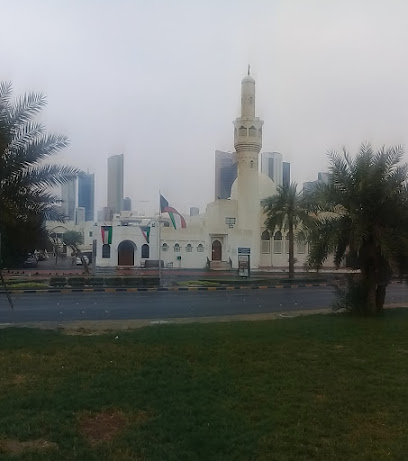
Souq AlMubarakiya
Explore Souq AlMubarakiya, Kuwait's historic market, where tradition meets modernity in a vibrant tapestry of culture and commerce.
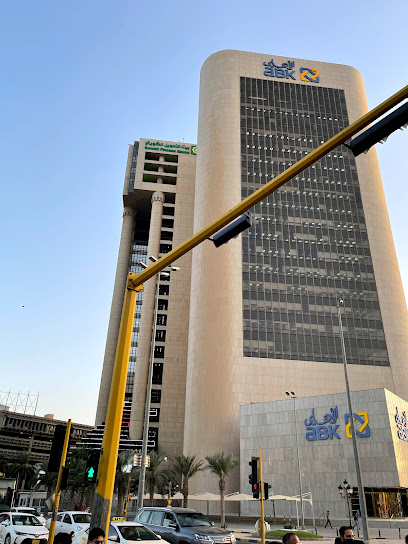
Historical Vintage & Classic Cars Museum
Explore the rich history of automobiles at the Historical Vintage & Classic Cars Museum, featuring a stunning collection of vintage and classic cars in Kuwait.

Mirror House
Explore the Mirror House in Kuwait, where art meets architecture, offering a unique glimpse into the vibrant cultural history of the region.

Naif Palace
Explore Naif Palace, a remarkable historical landmark in Kuwait City that showcases the rich heritage and stunning architecture of the region.

Unmissable attractions to see
Green Island
Explore the serene landscapes and thrilling activities at Green Island, a must-visit tourist attraction in Kuwait City offering fun for everyone.

Al Bahhar Entertainment Historical Village
Discover the rich heritage and vibrant culture of Kuwait at Al Bahhar Entertainment Historical Village, a perfect blend of tradition and entertainment.

Al Shamlan Mosque
Discover the serene beauty and rich heritage of Al Shamlan Mosque in Kuwait City, a must-visit landmark for cultural exploration.

Al-Andalus Garden
Explore the serene beauty of Al-Andalus Garden in Kuwait City, a lush oasis perfect for relaxation and family outings amidst vibrant flora.

حديقة عامة
Explore the lush landscapes and tranquil ambiance of General Park, a serene botanical garden in Omariya perfect for relaxation and nature walks.

متحف الموطن
Explore the unique wildlife exhibits at the Kuwait Animal Museum, a must-visit attraction for families and nature lovers in Kuwait City.

Water Tanks
Discover the Water Tanks of Kuwait, a historical landmark that reflects the region's heritage and architectural ingenuity in water management.
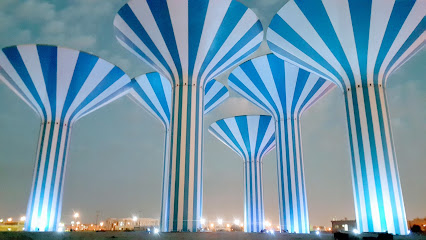
Kaifan Block 4 park
Experience the tranquility of Kaifan Block 4 Park, a serene oasis in Kuwait perfect for relaxation, family outings, and nature walks.

مبرة الآل والاصحاب
Discover the rich cultural heritage of Kuwait at Al-Mubarra Museum in Faiha, a captivating attraction for all history enthusiasts.

حديقة قطعة ٨
Explore the serene beauty of حديقة قطعة 8 in Faiha, a perfect escape in the heart of Kuwait for relaxation and family fun.

الطوفه الملونه
Explore the vibrant and artistic world of الطوفه الملوّنه in Shuwaikh Industrial, a unique tourist attraction full of color and creativity.

مدينة الكويت | حي الميد
Experience the vibrant blend of tradition and modernity in Kuwait City, where rich culture and stunning architecture await every traveler.

Mirqab Circle
Explore the vibrant Mirqab Circle in Kuwait City, a bustling hub of culture, shopping, and culinary delights that embodies the essence of modern Kuwait.

طراد إيجار رحلات بحرية - ابو عبد الرحمن97179027
Experience the thrill of the Arabian Gulf with boat rentals at Abu Abdurrahman Marine Rentals in Kuwait City, perfect for adventure seekers.

Abuzar
Experience the captivating charm of Abuzar, a hidden gem in Shuwaikh Port, where stunning coastal views meet vibrant local culture.

Essential places to dine
Mais Alghanim
Experience authentic Lebanese cuisine at Mais Alghanim in Kuwait City - where tradition meets flavor in every dish.

Dar Hamad
Discover authentic Middle Eastern flavors at Dar Hamad in Salmiya – where tradition meets taste in every dish.

Assaha Restaurant
Discover authentic Lebanese cuisine at Assaha Restaurant in Kuwait City - where flavors come alive in a warm and inviting atmosphere.

Mughal Mahal Sharq
Experience authentic Indian flavors at Mughal Mahal Sharq - where every meal is a celebration of taste and tradition.

Giovanni Restaurant
Experience authentic Italian flavors at Giovanni Restaurant in Kuwait City—where every dish tells a story of culinary tradition.

White Robata
Experience exquisite Asian fusion cuisine at White Robata in Kuwait City’s Sheikh Jaber Al-Ahmed Cultural Centre.

Lahore Shahi Qila Restaurant
Discover the authentic taste of Pakistan at Lahore Shahi Qila Restaurant in Kuwait City – where tradition meets flavor in every dish.

The Breakfast Club
Experience exquisite breakfast delights at The Breakfast Club in Kuwait City - where every bite is a taste of culinary excellence.
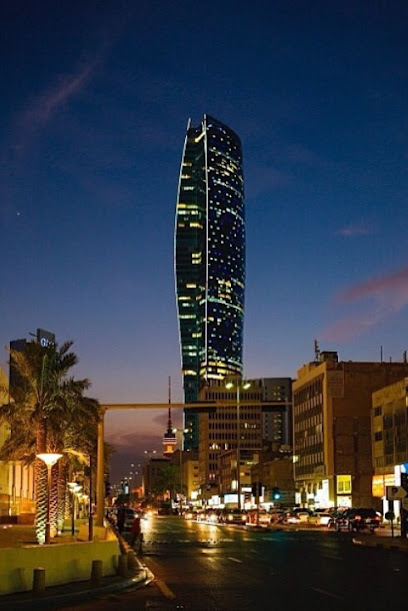
ORA Japanese Tapas
Discover exquisite Japanese cuisine at ORA Japanese Tapas in Kuwait City - where tradition meets innovation in every bite.

LIVUP ROOFTOP
Experience breathtaking views and exquisite cuisine at LIVUP ROOFTOP in Kuwait City—where dining meets adventure.

Tatami Japanese Restaurant
Indulge in authentic Japanese cuisine at Tatami Japanese Restaurant in Kuwait City, where tradition meets contemporary flair.

Cure Restaurant
Experience culinary excellence at Cure Restaurant in Shuwaikh Industrial, where local flavors meet innovative cuisine in a stylish setting.

Al Boom Steak & Seafood Restaurant
Experience fine dining at Al Boom Steak & Seafood Restaurant - where fresh seafood meets prime steaks in a stunning setting overlooking the Arabian Gulf.

Joe Restaurant Avenues | مطعم جو الأڤنيوز
Experience the best of Kuwaiti and international cuisine at Joe Restaurant Avenues - a culinary gem in the heart of Kuwait.
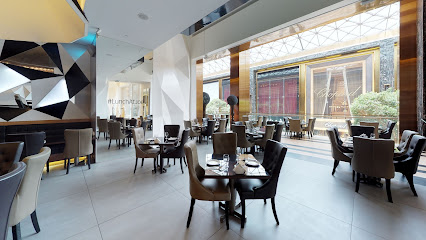
ROKA Kuwait
Discover the art of Japanese cuisine at ROKA Kuwait – where tradition meets innovation in every bite.

Markets, malls and hidden boutiques
The Avenues Mall
Explore The Avenues Mall, Kuwait's premier shopping destination with over 800 stores, tantalizing dining options, and a vibrant atmosphere.

360 Mall
Experience shopping like never before at 360 Mall in Zahra – a hub of luxury, dining, and entertainment for all travelers.

Kuwait Towers
Discover the iconic Kuwait Towers, a stunning blend of modern architecture and rich history, offering breathtaking views of the Arabian Gulf.

سوق السالمية
Discover Souk Al-Salmiya, a lively shopping mall in Salmiya, Kuwait, featuring diverse shops, delicious dining options, and vibrant cultural experiences.

Souk Sharq
Explore the vibrant Souk Sharq, a stunning shopping mall in Kuwait City with diverse shops, exquisite dining, and breathtaking waterfront views.

AlSalam Mall
Discover a vibrant shopping experience at AlSalam Mall in Salmiya, Kuwait, featuring diverse shops, dining, and entertainment for all ages.

London Supermarket
Explore the vibrant offerings of London Supermarket in Shuwaikh Industrial, where local culture meets a diverse selection of goods.

Al Fanar Mall
Experience the best of shopping at Al Fanar Mall, where fashion meets convenience in the heart of Salmiya.

The Promenade Mall
Experience the ultimate shopping and dining adventure at The Promenade Mall in Hawally, Kuwait - where style meets convenience.

Al Muthana Complex
Experience shopping at its finest at Al Muthana Complex in Kuwait City, where diverse brands meet delightful dining and vibrant entertainment.

The Cube Mall
Discover the ultimate shopping experience at The Cube Mall in Salmiya, featuring diverse stores, exquisite dining, and endless entertainment.

Ubuy
Explore Ubuy in Al Rai, Kuwait, for a diverse selection of clothing, electronics, and more in a modern shopping environment.

% Arabica - Adailiya
Experience the essence of specialty coffee at % Arabica - Adailiya, where every cup tells a story of quality and craftsmanship.

Al Babtain Electronics
Explore Al Babtain Electronics for an exceptional range of gadgets and top-notch customer service in the heart of Kuwait.

Switch Electronics - Adailiya
Discover the latest in electronics and technology at Switch Electronics in Adailiya - your one-stop shop for all things tech!

Essential bars & hidden hideouts
The Roof
Experience breathtaking views and exquisite flavors at The Roof, a premier restaurant and cafe in Bnied Al-Gar, Kuwait.

No.21
Discover the luxurious No.21 lounge in Kuwait City, where premium cigars and a sophisticated atmosphere await every visitor.

12.22 Lounge
Discover the perfect blend of relaxation and vibrant nightlife at 12.22 Lounge in Kuwait City, a must-visit for cocktail enthusiasts and social butterflies alike.

Genki Bar And Pub
Experience the lively atmosphere and vibrant nightlife at Genki Bar and Pub in Kuwait City, perfect for unwinding after a day of exploration.

Cohiba Atmosphere Kuwait
Experience luxury and relaxation at Cohiba Atmosphere Kuwait, a premier lounge offering fine cigars, exquisite drinks, and stunning Gulf views.

Jama
Discover Jama: A vibrant bar in Shuwaikh Industrial offering exquisite cocktails and a lively atmosphere perfect for unwinding and socializing.

Alsoor Lounge
Discover the charm of Alsoor Lounge, a perfect blend of relaxation and elegance in the heart of Kuwait City, offering delightful drinks and a serene ambiance.

77 Josper Bar
Savor the best grilled dishes in Kuwait City at 77 Josper Bar, a vibrant spot for delicious food and a welcoming atmosphere.

Macchiarte lounge
Experience the perfect blend of art and relaxation at Macchiarte Lounge in Kuwait City, where every sip and moment is crafted to delight.
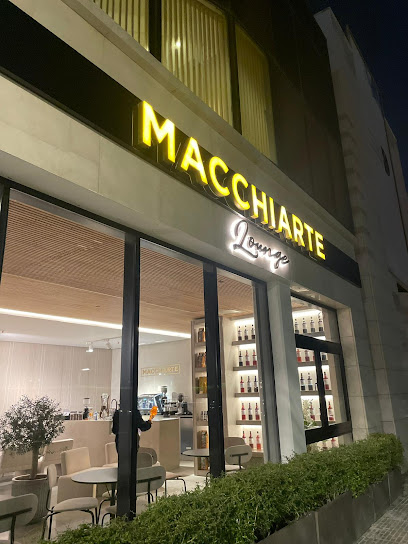
Al Bandar
Experience the vibrant blend of American cuisine and local flavors at Al Bandar, a must-visit bar and restaurant in Kuwait City.

Smoothie House
Discover the refreshing flavors of Smoothie House in Shuwaikh Industrial, where vibrant smoothies and a casual atmosphere await you.

Pool Bar
Discover a serene oasis at the Pool Bar in Salmiya, the perfect spot for relaxation and refreshing drinks in a picturesque poolside setting.

ديوان الجاسر
Discover the elegance of Diwan Al Jasser Lounge in Yarmouk, a perfect blend of luxury and local flavors in the heart of Kuwait.
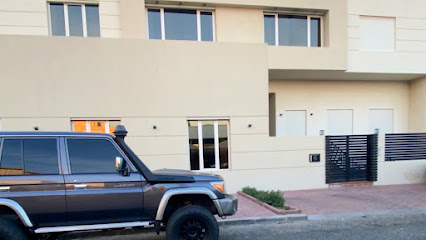
الجابريه
Experience the vibrant nightlife at Al-Jabriya Bar, where drinks flow and friendships blossom in the heart of Jabriya, Kuwait.

Oxio Poolside Lounge & Bar
Discover the tranquil oasis of Oxio Poolside Lounge & Bar at Waldorf Astoria, where luxury meets culinary delight in the heart of Kuwait.

Local Phrases about Kuwait Water Towers
-
- Helloمرحبا
[marhaba] - Goodbyeوداعا
[wadaea] - Yesنعم
[naam] - Noلا
[laa] - Please/You're welcomeمن فضلك/على الرحب والسعة
[min fadlak/ala arrahb wasaah] - Thank youشكرا
[shukran] - Excuse me/Sorryعذرا
[udhran] - How are you?كيف حالك؟
[kaif halak?] - Fine. And you?بخير. وانت؟
[bikhair. want?] - Do you speak English?هل تتحدث الإنجليزية؟
[hal tatahadath alinjlezia?] - I don't understandانا لا افهم
[ana la afham]
- Helloمرحبا
-
- I'd like to see the menu, pleaseاريد ان ارى القائمة، من فضلك
[ureed an ara alqaima, min fadlak] - I don't eat meatانا لا اكل لحم
[ana la akl lahm] - Cheers!صحتين!
[sahatin!] - I would like to pay, pleaseاريد ان ادفع، من فضلك
[ureed an adfaa, min fadlak]
- I'd like to see the menu, pleaseاريد ان ارى القائمة، من فضلك
-
- Help!النجدة!
[alnajda!] - Go away!اذهب بعيدا!
[athhab baedan!] - Call the Police!اتصل بالشرطة!
[atassil bilshurta!] - Call a doctor!اتصل بطبيب!
[atassil bitabib!] - I'm lostانا ضائع
[ana daaie] - I'm illانا مريض
[ana mareed]
- Help!النجدة!
-
- I'd like to buy...اريد ان اشتري...
[ureed an ashtari...] - I'm just lookingانا فقط اتطلع
[ana faqat atatlaa] - How much is it?كم سعره؟
[kam siroh?] - That's too expensiveهذا غالي جدا
[hatha ghali jiddan] - Can you lower the price?هل يمكنك تخفيض السعر؟
[hal yumkinuk takhfeed alsir?]
- I'd like to buy...اريد ان اشتري...
-
- What time is it?كم الساعة؟
[kam alsaa?] - It's one o'clockالساعة الواحدة
[alsaa alwahida] - Half past (10)العاشر والنصف
[alaaashir walnisf] - Morningالصباح
[assabah] - Afternoonالظهر
[alduhr] - Eveningالمساء
[almasa] - Yesterdayالامس
[alams] - Todayاليوم
[alyaum] - Tomorrowغدا
[ghadan] - 1واحد
[wahid] - 2اثنين
[ithnayn] - 3ثلاثة
[thalatha] - 4اربعة
[arbaa] - 5خمسة
[khamsa] - 6ستة
[sitta] - 7سبعة
[sabaa] - 8ثمانية
[thamania] - 9تسعة
[tisaa] - 10عشرة
[ashara]
- What time is it?كم الساعة؟
-
- Where's a/the...?اين ال...
[ayn al...] - What's the address?ما هو العنوان؟
[ma huwa alunwan?] - Can you show me (on the map)?هل يمكنك ان تريني (على الخريطة)؟
[hal yumkinuk an tareeni (ala alkhareeta)?] - When's the next (bus)?متى يأتي الحافلة التالية؟
[mata yaati alhafla altaliya?] - A ticket (to ....)تذكرة (الى ...)
[tazkira (ila ...)]
- Where's a/the...?اين ال...
History of Kuwait Water Towers
-
The Kuwait Water Towers are an iconic symbol of modern Kuwait, representing the country's rapid development and innovative spirit. Located in Kuwait City, these towers are a marvel of engineering and design, playing a crucial role in the country's water distribution system. They consist of 31 towers spread across various locations, with the most famous being the six Mushroom Towers and the Kuwait Towers, each contributing uniquely to the nation's infrastructure and skyline.
-
The construction of the Kuwait Water Towers began in the late 1960s, overseen by the Swedish engineering company VBB (now known as Sweco). The project aimed to address Kuwait's growing water needs as the country experienced rapid urbanization and population growth. The Mushroom Towers, designed by Swedish architect Sune Lindström, feature a distinctive mushroom-like shape, each standing at approximately 35 meters tall with a capacity of 3,000 cubic meters of water. The Kuwait Towers, designed by Malene Bjørn and Sune Lindström, consist of three towers, with the tallest reaching a height of 187 meters. These towers are characterized by their unique spherical structures, with the largest sphere housing a restaurant and observation deck.
-
The Kuwait Water Towers are not just functional structures but also hold significant historical value. They were completed in 1976, a period marked by Kuwait's transformation from a modest port city to a thriving, modern metropolis driven by the oil boom. The towers symbolize the nation's ambition and progress, standing as a testament to the country's commitment to modernization and infrastructure development. The Kuwait Towers, in particular, have become a national symbol, often featured in postcards, stamps, and various forms of media representing Kuwait.
-
Architecturally, the Kuwait Water Towers are renowned for their innovative and futuristic design. The Mushroom Towers' sleek, minimalist aesthetic and functional design have made them a topic of study in architectural circles. The Kuwait Towers, with their elegant, spherical shapes and intricate tile work, blend traditional Islamic design elements with modern engineering. The towers' blue-green tiles shimmer in the sunlight, creating a mesmerizing effect that captures the essence of Kuwait's coastal environment. The observation deck in the largest tower offers panoramic views of Kuwait City and the Arabian Gulf, making it a popular attraction for both locals and tourists.
-
The Kuwait Water Towers have had a profound cultural impact on the nation. They are a source of national pride and a symbol of Kuwait's resilience and adaptability. The towers have been the backdrop for numerous cultural and social events, including National Day celebrations and public gatherings. The Kuwait Towers, in particular, have become a favored spot for couples, families, and tourists, providing a scenic and serene environment for leisure activities. The towers have also inspired various forms of art, from paintings to photography, capturing their beauty and significance in the Kuwaiti cultural landscape.
-
Today, the Kuwait Water Towers continue to play a crucial role in the country's water supply system while also serving as major tourist attractions. The towers have been well-maintained and periodically renovated to ensure their structural integrity and aesthetic appeal. They stand as enduring symbols of Kuwait's journey towards modernization and its commitment to providing essential services to its citizens. The Kuwait Towers, in particular, remain a must-visit destination for anyone traveling to Kuwait, offering a unique blend of history, culture, and breathtaking views.
Kuwait Water Towers Essentials
-
Kuwait Water Towers are located in Kuwait City, the capital of Kuwait. The nearest international airport is Kuwait International Airport (KWI), approximately 20 kilometers away. From the airport, you can take a taxi or use ride-sharing services to reach the water towers. The journey typically takes around 20-30 minutes by road, depending on traffic conditions.
-
Kuwait City has a well-maintained road network. Taxis and ride-sharing services like Uber and Careem are readily available and are the most convenient ways to get around. Public buses operated by the Kuwait Public Transport Company (KPTC) are also an option, although they may not be as convenient for tourists. Renting a car is another viable option, but familiarize yourself with local driving laws and conditions.
-
The official currency in Kuwait is the Kuwaiti Dinar (KWD). Credit cards are widely accepted in hotels, restaurants, and larger shops, but it is advisable to carry some cash for smaller establishments and markets. ATMs are widely available throughout Kuwait City, including near tourist attractions like the water towers.
-
Kuwait is generally a safe destination for tourists. However, it's advisable to take standard precautions. Avoid isolated areas at night and keep an eye on your belongings in crowded places. While the crime rate is low, it is always wise to stay vigilant. Areas like Jleeb Al-Shuyoukh are better avoided after dark due to higher crime rates.
-
In case of emergency, dial 112 for immediate assistance, which connects you to police, medical services, and fire departments. Kuwait has well-equipped hospitals and clinics. It's advisable to have travel insurance that covers medical emergencies. For minor health issues, pharmacies are widely available.
-
Fashion: Do dress modestly. Avoid wearing revealing clothing as it is considered disrespectful. Women should cover their shoulders and knees. Religion: Do respect local customs and traditions. During the holy month of Ramadan, avoid eating, drinking, or smoking in public during daylight hours. Public Transport: Do be respectful and considerate. Don't eat or drink on public transport. Greetings: Do greet people with a handshake. Men should wait for women to extend their hand first. Eating & Drinking: Do try local dishes and accept hospitality graciously. Don't refuse food or drink as it is considered impolite.
-
To experience Kuwait Water Towers like a local, visit during the early morning or late afternoon to avoid the midday heat. Engage with locals; they are often friendly and willing to share stories about the country's history and culture. Don't miss the opportunity to take panoramic photos from the observation deck of the towers. Also, consider exploring nearby attractions like the Grand Mosque and the Kuwait National Museum for a more enriching experience.
Trending Landmarks in Kuwait Water Towers
-
Al Shaheed Park
-
Boulevard Park
-
Sheikh Jaber Al-Ahmad Cultural Centre
-
Liberation Tower
-
Grand Mosque of Kuwait
-
Green Island
-
Safat Square
-
Al Bahhar Entertainment Historical Village
-
Bait Al Othman Museum
-
Abraj Park
-
Kuwait National Museum
-
Souq AlMubarakiya
-
Historical Vintage & Classic Cars Museum
-
Mirror House
-
Naif Palace
Nearby Cities to Kuwait Water Towers
-
Things To Do in Hawalli
-
Things To Do in Salmiya
-
Things To Do in Farwaniya
-
Things To Do in Sabah Al-Salem
-
Things To Do in Jahra
-
Things To Do in Mangaf
-
Things To Do in Ahmadi
-
Things To Do in Fahaheel
-
Things To Do in Basra
-
Things To Do in Amara
-
Things To Do in Al Jubail
-
Things To Do in Dammam
-
Things To Do in Al Khobar
-
Things To Do in Budaiya
-
Things To Do in Saar








